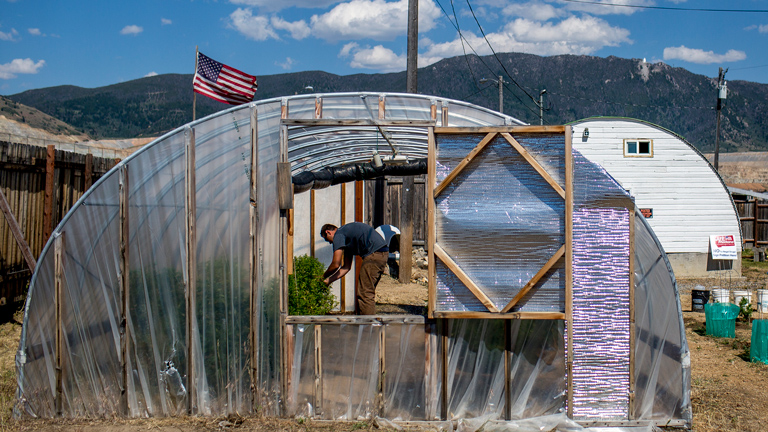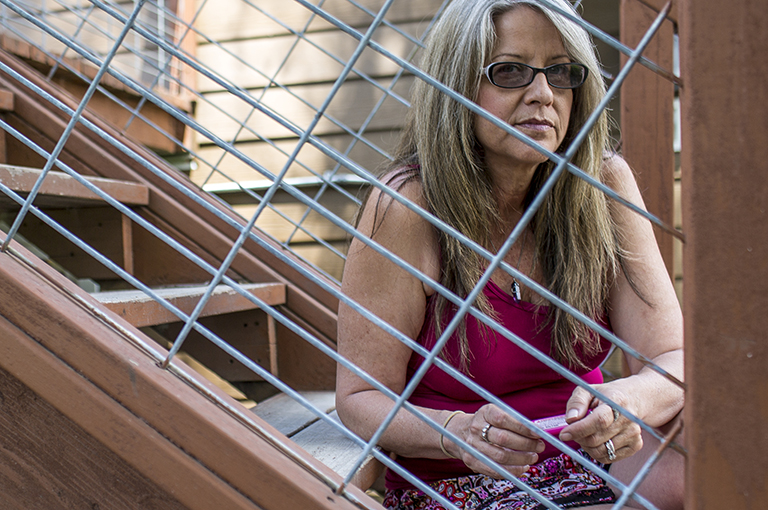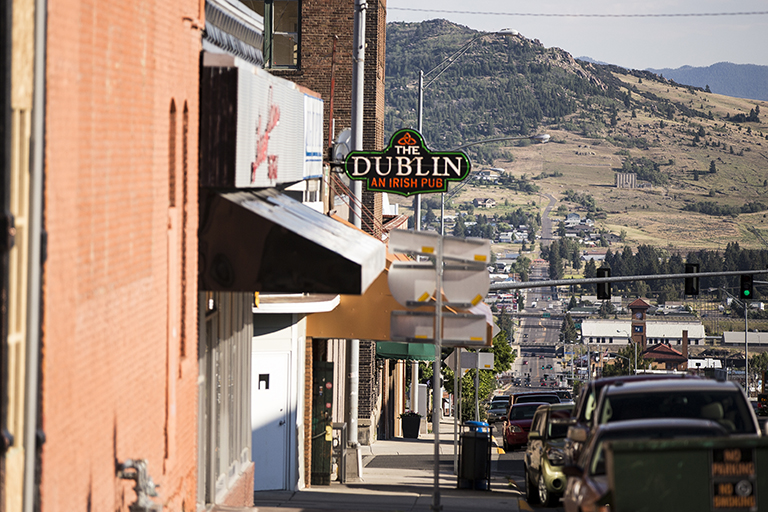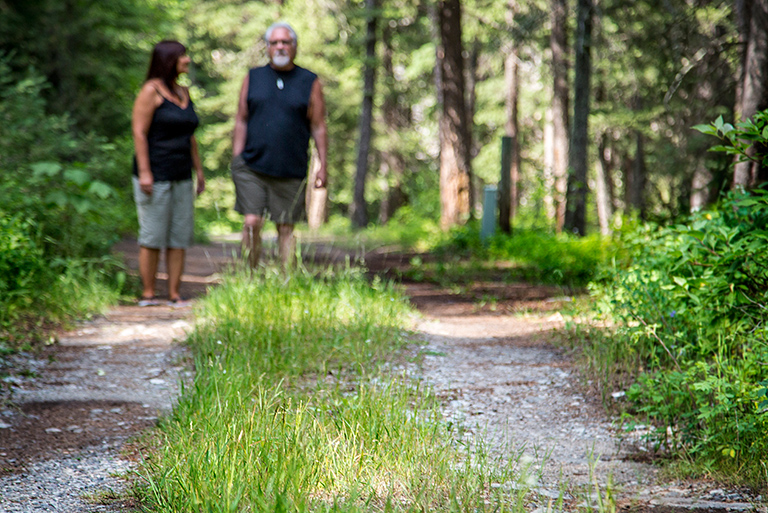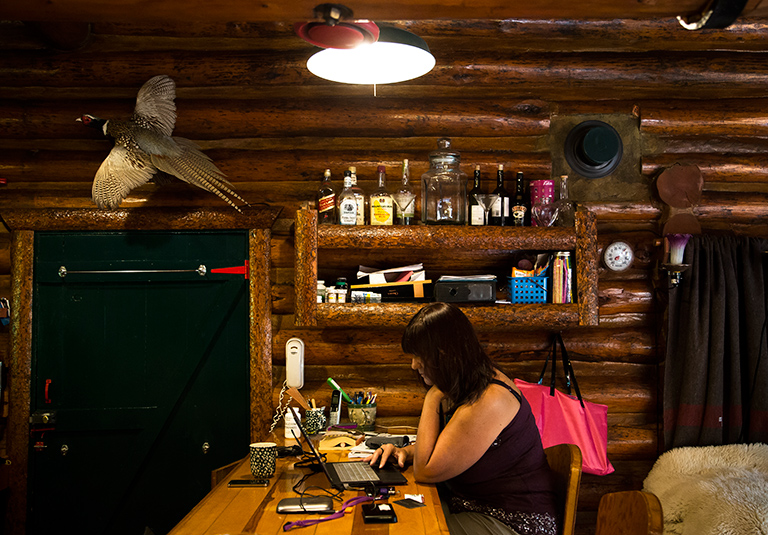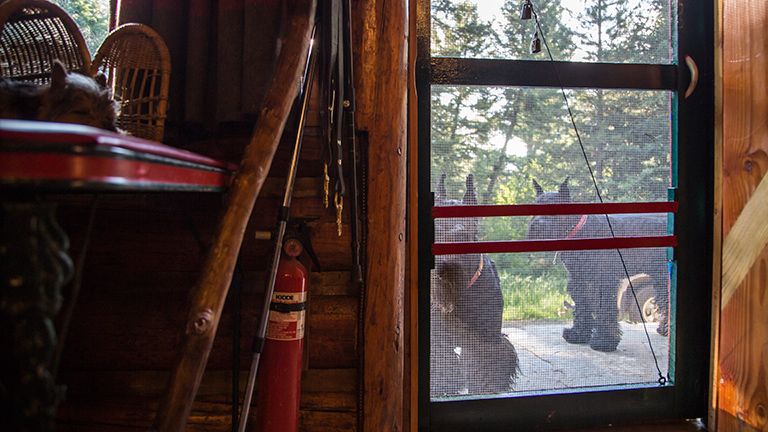Smith's eyes dart nervously behind square black-rimmed glasses whenever the raids are brought up. His voice drops to a husky whisper when the lawsuit is mentioned, when the future of the industry is questioned.
“I’m a bulls-eye,” Smith said, glancing behind his back at rows of labeled pot plants. “I’m the last … shop left in this town, and everyone depends on me.”
Buying illegally outside the system
Jon Svaren, a bearded 15-year Navy veteran, has been living out on his aunt’s farm off dirt roads near Hardin, in the eastern part of the state, where attitudes toward marijuana tend to be harsher. Svaren breaks the law more days than not. He’s an unapologetic pot-smoker, self-medicating for a spinal fusion and years of back pain that intensify with long hours of labor logged feeding sheep and tending to crops.
Jon Svaren uses marijuana to treat persistent back pain. In this video, he discusses his personal journey that has driven him to openly defy Montana’s medical marijuana regulations.
The pot comes from the black market. Vaporizing, as is his preference, four to five times a day could land him in jail.
Not that he cares much. “Put me before a jury of 12,” Svaren said, between swigs of homemade lemonade served cold from a Vlasic pickle jar. “I’d be happy to explain myself to them.”
The tens of thousands of patients who have left the system haven’t stopped smoking, he said, smirking at the idea. They’ve gone to the black market, where there is no registry, no threat of the state turning against the system once more. In turning to the black market, many find an ironic sense of safety.
An “open violation type of guy,” the libertarian-leaning Svaren refused to renew his medical card after the Bureau of Alcohol, Tobacco, Firearms and Explosives in 2011 prohibited medical marijuana patients from owning firearms. Svaren, who likes to go duck-hunting and keeps an eye out for bears wandering through the farm (it’s happened before), has quite the gun collection.
Though Svaren ditched the system early, others, too, are planning for a future with limited options for procuring marijuana if the Supreme Court rules against the industry.
Because providers would be prohibited from making a profit, the black market or growing at home would be the only viable option for patients, according to Josh Daniels, a patient advocate living in the suburbs of Billings.
Home-growing, though, presents problems of its own. The law doesn’t allow patients a legal way to procure seeds or clones.
Josh Daniels has been medicating with marijuana since shortly after he was diagnosed with multiple sclerosis. In this video, he outlines the challenges to home-growing marijuana for medical use in Montana.
“How’s that supposed to work?” asked Daniels, between deep drags of a hand-rolled cigarette. He’s also a patient, growing marijuana to deal with his multiple sclerosis. “A magic seed fairy is going to deliver seeds in your mailbox? To grow, the first thing you have to do is break the law.”
Les Yother, a recently retired 63-year-old former laborer, lives a couple hundred miles west of Daniels and Svaren, a long, winding ride on Interstate 90 away, across two-lane stretches that meander through an empty expanse of green dotted with the occasional farm. Miles pass between each exit until his hometown, Butte, once known as “the richest hill on Earth” for its vastly profitable copper mines, comes into view.
The town of nearly 34,000 has a rough-and-tumble, heavy-drinking history. Here, in the midst of blue-collar households and aging infrastructure, medical marijuana has by and large found a safe haven. Dispensaries downtown still advertise, plastering phone numbers and websites outside. Men linger drinking beer in the middle of the day down a main thoroughfare, Montana Street, taking advantage of a loose open container law. Pot seems to raise few eyebrows.
The birthplace of Evel Knievel, Butte tends toward a live-and-let-live attitude when it comes to marijuana – a sharp contrast to the other parts of Montana. Yother was one of the first to get a card in 2004, patient 69 in the registry.
Since then, Yother said, it’s gone back and forth so many times that no one can keep track.
Les Yother worked in manual labor for most of his life. In this video, he details how medicating with marijuana has alleviated lingering pains from a life of labor.
A former alcoholic, Yother credited marijuana with “settling his demons.” The cardholder smokes about two grams a day to manage his glaucoma and relieve pain from a bad back that has him hunched almost in half from years of hard labor.
If the Supreme Court rules against the industry, Yother would keep on puffing pot out of a residue-streaked green metallic pipe: “Oh, I’d go black market,” he said.
Hanging on, industry faces uncertain future
The direction – and destination – of marijuana in Montana hangs in the uneasy balance. The status quo has left providers and patients in a vacuum of fear and uncertainty, unsure what the Supreme Court will decide in the months to come.
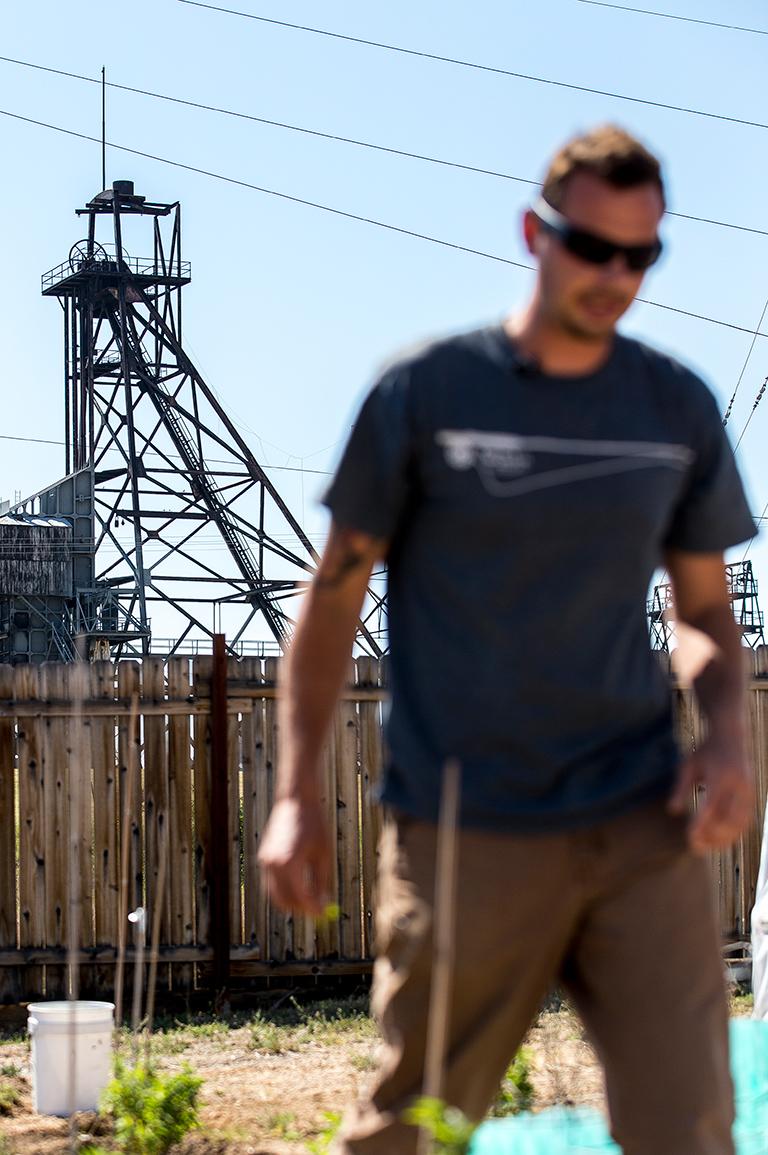
Mark Gibbons Jr.'s medical dispensary overlooks an old mine headframe in the historic uptown district of Butte. (Photo by Martin do Nascimento | News21)
A “Reefer Madness” poster stared down on Mark Gibbons Jr., the self-proclaimed longest-running provider in Montana as he mulled over what might come next.
Gibbons, the owner of Butte’s Montana Natural Medicine, which served 500 patients at its height in early 2011, has weathered setbacks before: failed crops, dropped customers. He once cycled through 10 pounds of marijuana per month – that’s down to two, or so, for his 40 remaining patients.
Perched behind the counter, beneath an “Against SB 423” sticker, opposite a University of Montana diploma tucked between a couple of Yellowstone National Park shot glasses, Gibbons sighed in frustration at shifting regulation he says he still doesn’t fully understand.
If the court rules against the industry, Gibbons has a backup plan to make ends meet: accepting “donations,” not payment, from “patients,” not customers. With a lot of patience and a few creative solutions, cannabis ought to survive in the state, he said.
“It’ll just be less,” Gibbons said. “It’ll be less plants and less money and less patients getting treatment.”
